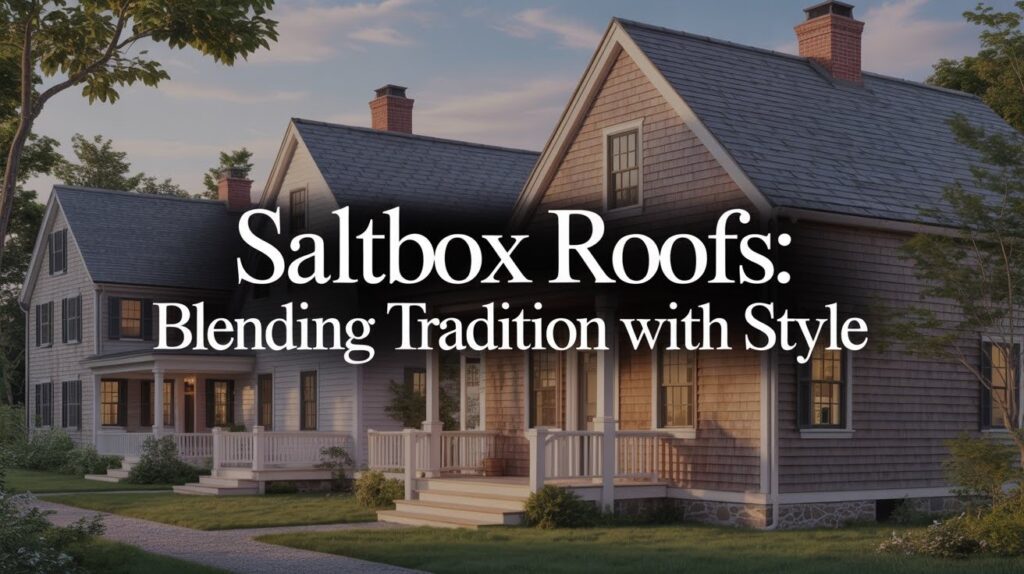The saltbox roof stands as one of America’s most recognizable architectural features, characterized by its distinctive asymmetrical design with a long, sloping rear section and shorter front slope.
This practical roofing style emerged during Colonial America, where settlers adapted European building techniques to meet the demands of harsh New England winters and growing families.
Today, the saltbox roof continues to capture homeowners’ attention for its unique blend of historical charm and functional benefits.
The design offers excellent weather protection, efficient use of space, and a timeless aesthetic that works well with both traditional and contemporary home styles.
Modern builders appreciate how this classic form provides practical solutions while maintaining the authentic character that makes American colonial architecture so enduring and appealing.
A distinctive asymmetrical roofing style with long rear slopes, originating from Colonial America and named after wooden salt containers.
What Is a Saltbox Roof?
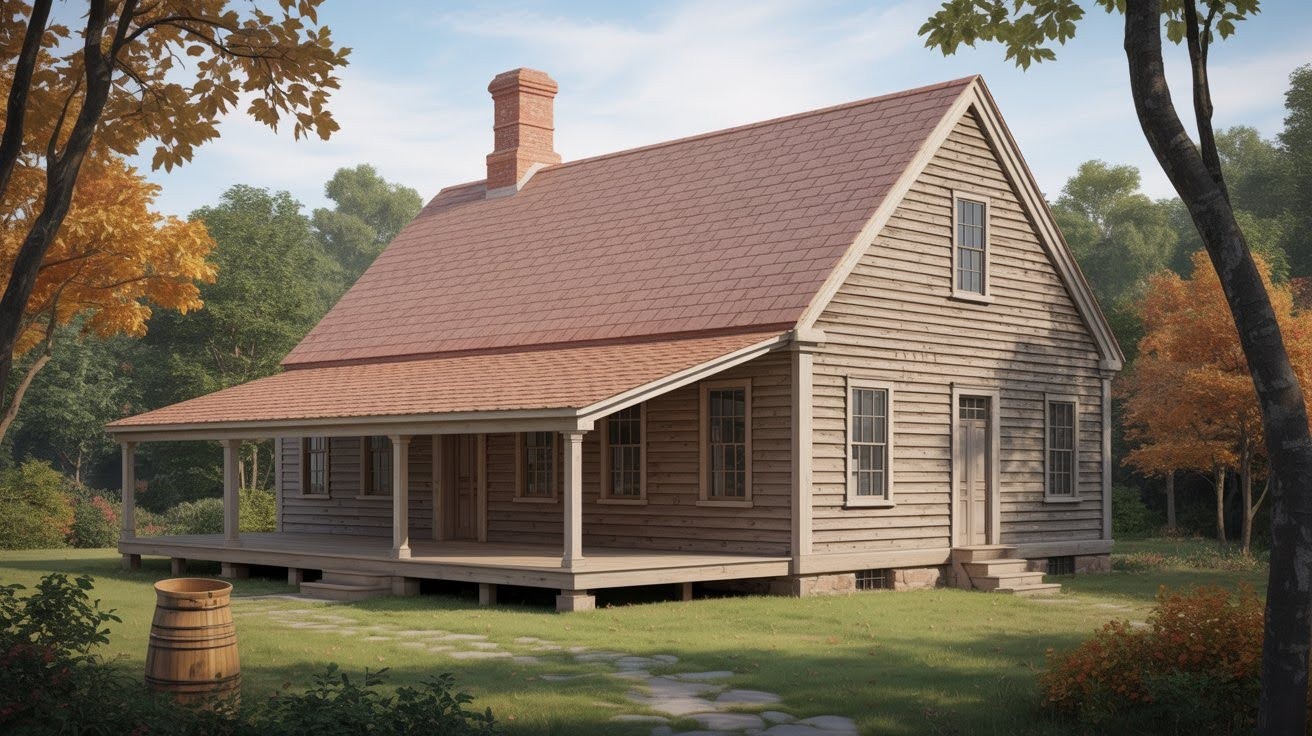
A distinctive asymmetrical roofing style with long rear slopes, originating from Colonial America and named after wooden salt containers.
Key Design Features
- Asymmetrical two-sided roof with long rear slope that extends much further than the front section
- Distinct difference in pitch between front and back portions, creating the signature silhouette
- Front section maintains a steeper pitch while the back slope extends at a gentler angle
- Typically covers homes that are one-and-a-half to two stories tall
- Extended rear slope often covers a single-story addition or lean-to section
- Back slope sometimes reaches nearly to ground level for maximum coverage
Origin of the Name
The term “saltbox” comes from the resemblance to wooden salt containers that were common household items in the 1800s.
These simple wooden boxes featured the same asymmetrical profile, with a hinged lid that created a similar sloped appearance.
This naming convention perfectly captures the roof’s distinctive shape while evoking the classic New England architectural charm that has made this style so enduring and recognizable throughout American history.
Why Saltbox Roofs Still Appeal Today
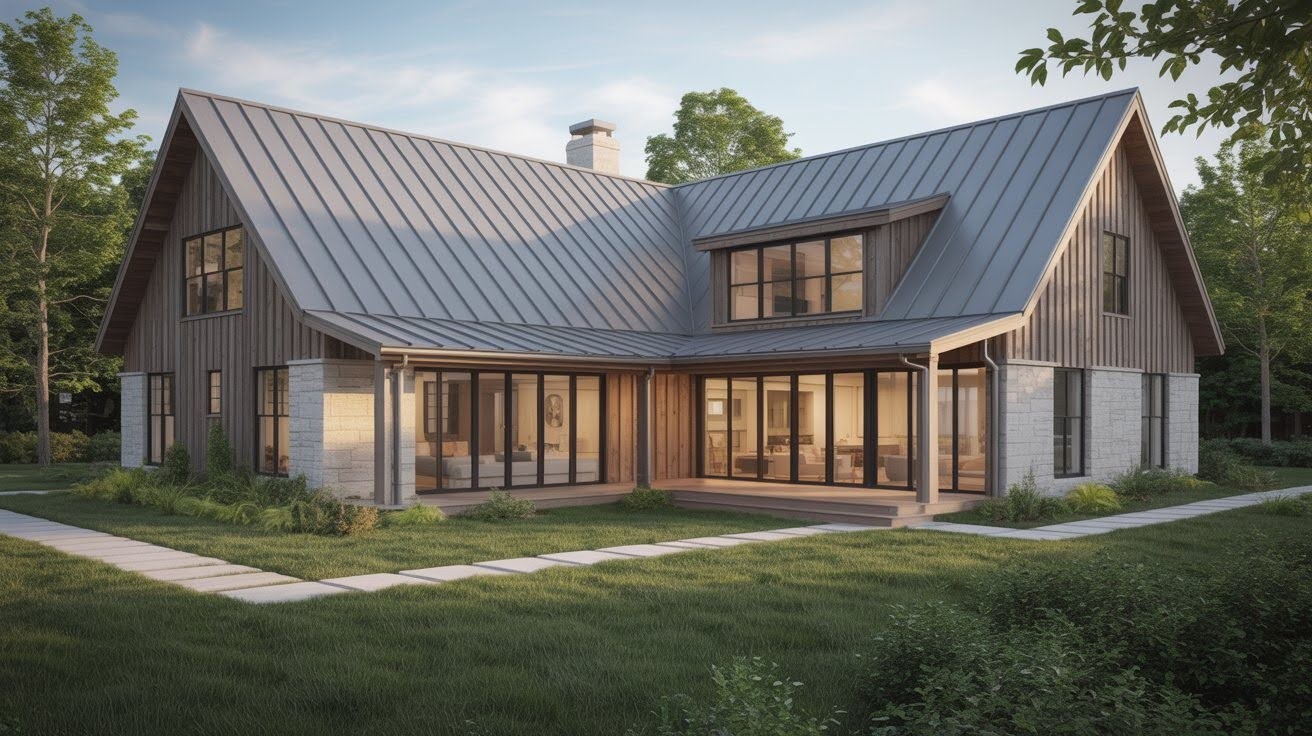
Modern homeowners choose saltbox roofs for their historical charm, architectural versatility, and practical space-saving benefits in contemporary home design.
Timeless Aesthetic
The saltbox roof evokes historical charm while providing modern curb appeal that helps homes stand out in today’s neighborhoods.
This distinctive roofing style works remarkably well with both rustic farmhouse exteriors and contemporary home designs, proving its versatility across different architectural approaches.
The unique asymmetrical profile creates visual interest that breaks away from standard roofing styles, offering authentic colonial character that appeals to homeowners seeking distinctive architectural features.
The classic proportions feel both familiar and fresh in current residential design trends, making it an excellent choice for those who want historical authenticity without sacrificing modern appeal.
Space-Saving Potential
The rear slope of a saltbox roof allows for additional living space or half-story rooms without expanding the home’s footprint, making it an excellent solution for growing families.
This design creates opportunities for creative interior layouts, including loft areas and bonus rooms under the extended slope, maximizing usable square footage while maintaining the home’s compact external appearance.
Compared to traditional additions or second-story expansions, saltbox roofs provide a cost-effective way to add functional space.
The flexible room configurations can adapt to changing family needs over time, making this roofing style both practical and forward-thinking for modern homeowners.
Practical Advantages of a Saltbox Roof
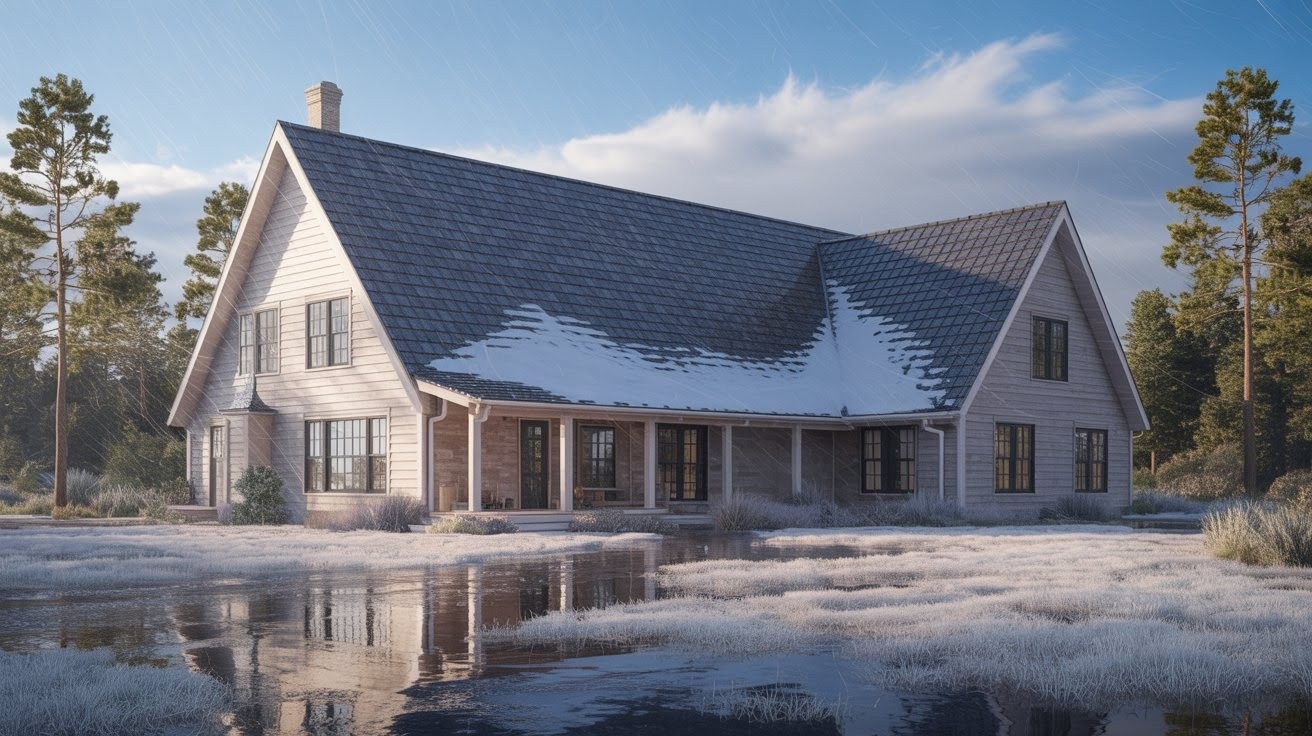
Saltbox roofs offer practical benefits including excellent weather drainage, superior wind resistance, and reduced maintenance requirements for homeowners.
1. Snow & Rain Drainage
The sloped design of a saltbox roof prevents snow and water buildup, making it particularly effective in regions with heavy precipitation.
The steep front pitch and extended rear slope create natural drainage paths that move moisture away from the structure quickly and efficiently, reducing the risk of ice dams and water damage.
2. Wind Resistance
The aerodynamic shape of a saltbox roof provides exceptional strength during storms and high-wind conditions.
The streamlined profile allows wind to flow smoothly over the structure rather than creating uplift pressure, making this design particularly suitable for areas prone to severe weather events.
3. Simple Maintenance
Saltbox roofs feature fewer valleys and joints compared to more complex roofing systems, which significantly reduces leak risks and maintenance requirements.
The straightforward design with minimal intersections means fewer potential problem areas, making inspections easier and repairs more straightforward when needed.
Design Challenges to Consider
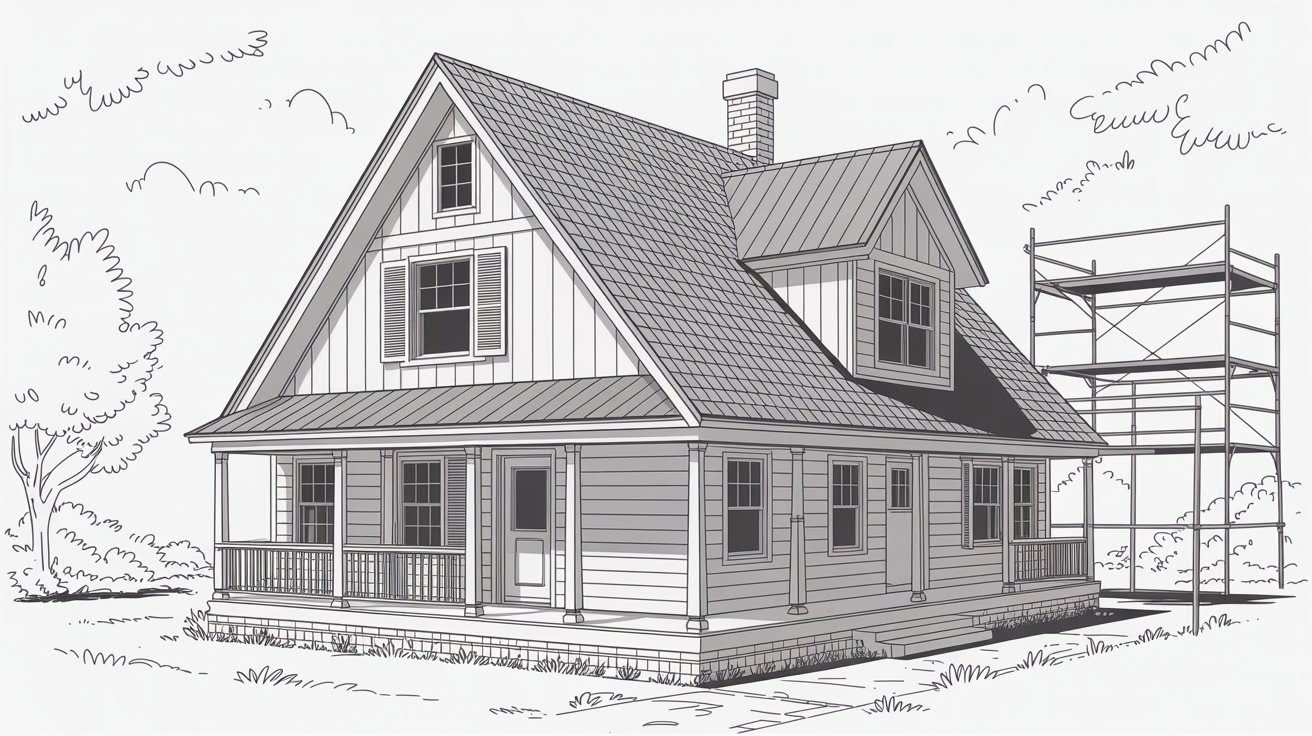
Sloped Ceilings & Limited Attic Space
The asymmetrical design of a saltbox roof can reduce usable attic or storage space compared to traditional roof styles.
The varying ceiling heights and angled walls created by the extended rear slope may limit furniture placement and storage options in upper-level rooms, requiring careful planning for interior layouts.
More Complex to Build
Saltbox roofs require skilled framing due to the uneven roofline and asymmetrical structure.
The construction process involves precise calculations and experienced craftsmanship to ensure proper load distribution and structural integrity, which can increase both building time and costs compared to simpler roof designs.
Best Roofing Materials for Saltbox Designs
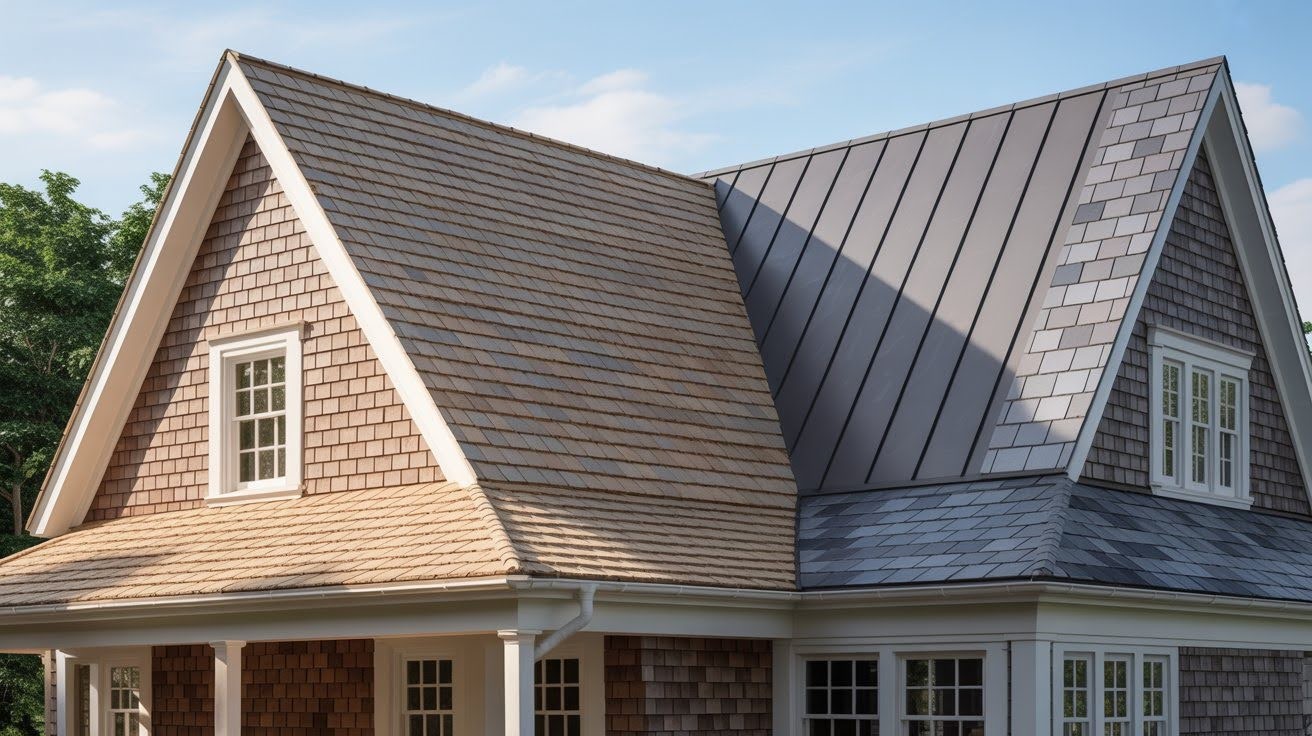
Choose roofing materials for saltbox designs from traditional wood shakes and asphalt shingles to modern metal and composite options.
Traditional Options
Wood shakes or asphalt shingles provide classic appeal that complements the historical character of saltbox roofs.
Wood shakes offer authentic colonial aesthetics and natural weathering that enhances the traditional look, while asphalt shingles provide a cost-effective option that maintains the classic appearance while offering reliable protection and easier installation.
Modern Alternatives
Metal, slate, or composite shingles offer superior durability and low maintenance for contemporary saltbox applications.
Metal roofing provides excellent longevity and weather resistance while complementing both traditional and modern home styles.
Slate delivers premium aesthetics with exceptional lifespan, while composite shingles combine the appearance of natural materials with enhanced performance and reduced maintenance requirements.
Saltbox Roof Maintenance Tips
Keep the Slopes Clear
- Regular removal of debris, moss, and snow is essential for maintaining your saltbox roof’s performance and longevity
- The extended rear slope can accumulate leaves, branches, and other debris that may block drainage or retain moisture
- Snow removal is particularly important on the longer slope to prevent excessive weight buildup and ice dam formation
- Clean gutters and downspouts regularly to ensure proper water flow away from the structure
Inspect Intersections
- Pay close attention to flashing, dormers, and valleys where different roof sections meet, as these areas are most vulnerable to water infiltration
- The special geometry of saltbox roofs creates specific intersection points that require regular monitoring for signs of wear, damage, or deterioration
- Professional inspections should focus on these critical areas to catch potential problems early and prevent costly repairs
- Check for loose or damaged shingles around chimneys, vents, and other roof penetrations
Conclusion
The saltbox roof represents a perfect marriage of historical significance and modern practicality.
This distinctive architectural feature, born from Colonial America’s ingenuity, continues to offer homeowners an ideal solution for those seeking both character and functionality.
From its excellent weather resistance and space-saving potential to its timeless aesthetic appeal, the saltbox design proves that traditional architecture can meet contemporary needs.
While construction complexity and interior space considerations require careful planning, the long-term benefits make saltbox roofs an attractive option for many homeowners.
Whether you choose traditional materials like wood shakes or modern alternatives like metal roofing, proper maintenance and professional installation ensure your saltbox roof will provide decades of reliable protection while maintaining its distinctive charm and curb appeal.
Frequently Asked Questions
What makes a saltbox roof different from other roof styles?
A saltbox roof features an asymmetrical design with a long rear slope and shorter front slope, creating a distinctive profile. This unique configuration originated in Colonial America and differs from symmetrical gable or hip roofs by extending much further down on one side.
Are saltbox roofs more expensive to build than traditional roofs?
Yes, saltbox roofs typically cost more due to their complex asymmetrical framing requirements and need for skilled craftsmanship. However, the additional space created under the extended rear slope can offset costs by providing extra living area without expanding the home’s footprint.
What roofing materials work best for saltbox designs?
Traditional options like wood shakes and asphalt shingles complement the historical character, while modern materials like metal or composite shingles offer enhanced durability. The choice depends on your budget, climate conditions, and desired aesthetic appeal.
Do saltbox roofs require special maintenance?
Saltbox roofs need regular debris removal from both slopes and careful attention to flashing and intersection points. The extended rear slope can accumulate more debris than standard roofs, but the simpler design with fewer valleys actually reduces overall maintenance complexity.
Can I add a saltbox roof to an existing home?
Adding a saltbox roof to an existing home is possible but requires significant structural modifications and professional engineering assessment. The asymmetrical design affects load distribution and may require foundation reinforcement, making it a complex renovation project.

